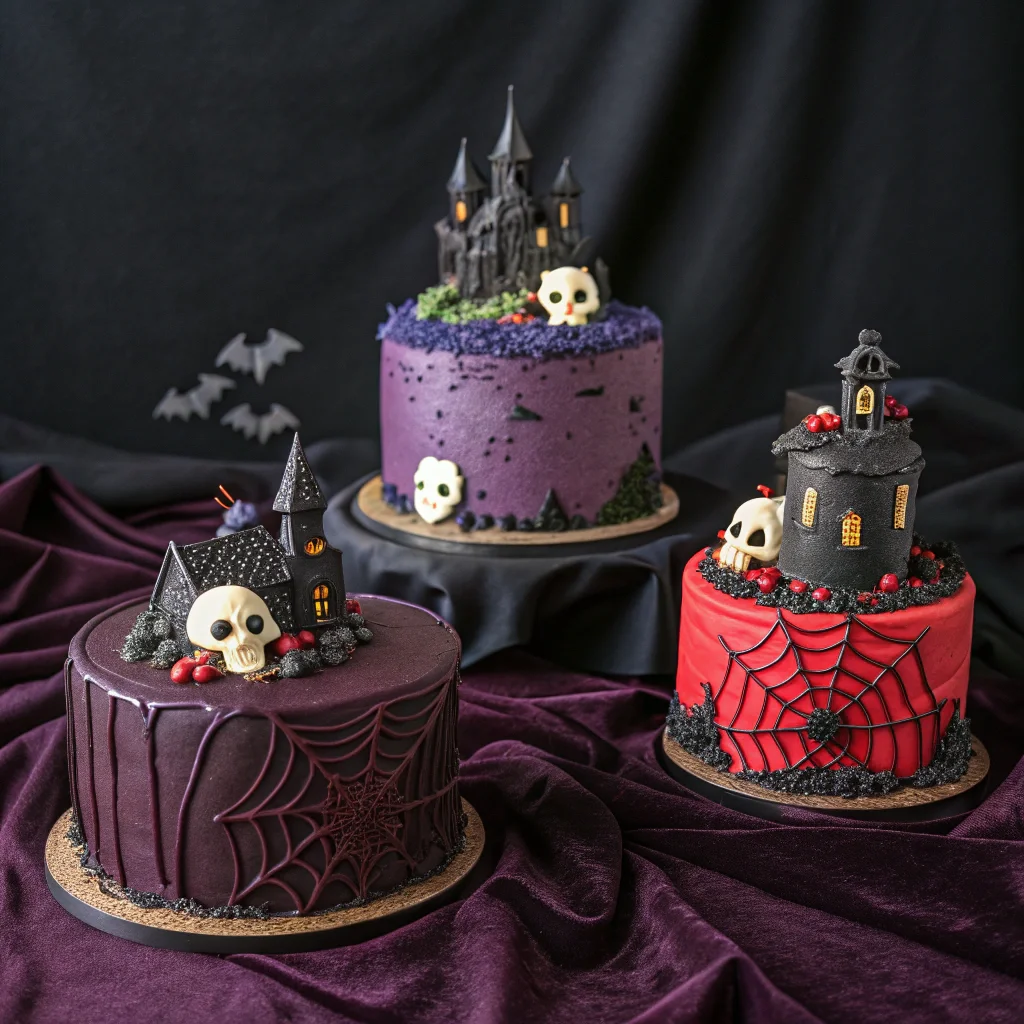Introduction
I first encountered gothic cakes during a Halloween gathering hosted by my dear friend Ella Chef. The cakes were unlike anything I had ever seen—towering creations cloaked in black, crimson, and violet icing, adorned with edible skulls and dramatic piping. Ella explained that gothic cakes are about embracing a darker, more theatrical side of baking. The cakes were not just desserts but edible art pieces, evoking mystery and elegance with every detail. That night, I realized gothic cakes can transform any celebration into something extraordinary, combining bold flavors with hauntingly beautiful designs that leave a lasting impression.

Gothic Cake
Ingredients
Equipment
Method
- Preheat oven to 350°F (175°C). Grease and line two 8-inch cake pans.
- Cream together butter and sugar until fluffy. Add eggs one at a time, then stir in vanilla.
- Sift flour, cocoa, and baking soda. Alternate adding dry mixture and buttermilk to wet mixture until smooth.
- Divide batter between pans and bake 30–35 minutes, or until toothpick comes out clean.
- Cool cakes completely before frosting with colored buttercream.
- Decorate with gothic elements such as fondant skulls, bats, or castles.
Nutrition
Notes
How to Make Gothic Cakes
Creating gothic cakes requires both baking skill and artistic imagination. Begin by preheating your oven to 350°F (175°C) and preparing two 8-inch round pans with butter and parchment paper. In a mixing bowl, cream together softened butter and sugar until pale and fluffy, then add eggs one at a time, beating thoroughly. Stir in vanilla extract to enhance the base flavor.
In a separate bowl, sift together flour, dark cocoa powder, and baking soda. Gradually add this dry mixture to the wet ingredients, alternating with buttermilk, until the batter is smooth and darkly rich. Divide the batter evenly between the prepared pans and bake for 30–35 minutes, or until a toothpick inserted in the center comes out clean. Let the cakes cool completely before decorating.
For the frosting, prepare buttercream tinted with black, red, and purple food coloring. Apply a crumb coat first, chilling the cake briefly to set the base. Then layer on a smooth finish of dark buttercream. Using piping bags, create designs such as spider webs, gothic roses, or dramatic drips. Decorations can be further enhanced with fondant elements like skulls, bats, or miniature castles.
To elevate the look, dust edible glitter or apply metallic food paint for a haunting shine. You can also add berries or dark-colored sprinkles for texture and contrast. Gothic cakes are about atmosphere—bold colors, striking decorations, and a slightly eerie yet elegant feel.
These cakes work perfectly for Halloween, gothic weddings, or themed birthdays. The combination of moist, chocolate-rich layers and dramatic presentation ensures they will be both a visual and culinary centerpiece.
Conclusion
Gothic cakes are more than desserts—they’re edible art that captures mystery and drama. Inspired by Ella Chef’s creations, these cakes blend rich flavors with stunning, dark designs. Whether adorned with skulls, spider webs, or castles, they are perfect for making a bold statement at any event. By pairing decadent chocolate layers with artistic decoration, gothic cakes embody both taste and spectacle. They remind us that baking is not just about flavor, but also about creativity and expression. Perfect for Halloween parties or gothic-inspired celebrations, these cakes are unforgettable centerpieces of the table.
